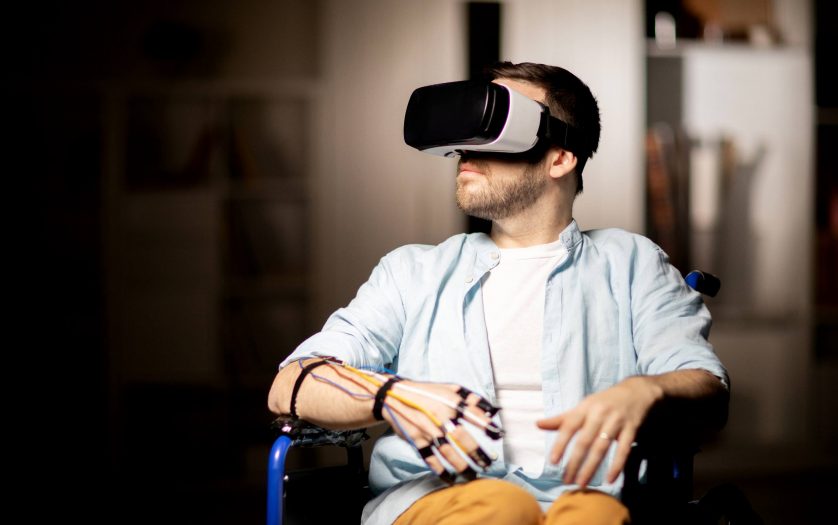Haptics in Stroke Rehabilitation: Difference between revisions
(Resized image) |
(Added Heading and Subheadings) |
||
| Line 2: | Line 2: | ||
== Introduction == | == Introduction == | ||
Stroke is one of the | Stroke is one of the leading causes of disability which results in minor to severe impairments. Post stroke sequelae comprises of impairments such as loss of range of motion, muscle weakness and motor deficits resulting from impaired force generation.<ref>J David, S Alma, T Marilyn, C Grigore, A Sergia, R Michael et al.Virtual Reality Enhanced Stroke Rehabilitation. IEEE Trans. Neural Syst. Rehabilitation Eng. 2001:3</ref> The most common impairment after stroke is reduced upper extremity function[7] hand function is commonly impaired after stroke, strongly affecting the power to perform daily activities. Upper limb robotic devices are developed to enhance rehabilitation therapy offered to persons who suffered a stroke, but they rarely specialise in the training of hand sensorimotor function. | ||
== Background == | |||
== Theoretical Framework == | |||
== Evidence on Effectiveness == | |||
Revision as of 20:59, 20 November 2021
Introduction[edit | edit source]
Stroke is one of the leading causes of disability which results in minor to severe impairments. Post stroke sequelae comprises of impairments such as loss of range of motion, muscle weakness and motor deficits resulting from impaired force generation.[1] The most common impairment after stroke is reduced upper extremity function[7] hand function is commonly impaired after stroke, strongly affecting the power to perform daily activities. Upper limb robotic devices are developed to enhance rehabilitation therapy offered to persons who suffered a stroke, but they rarely specialise in the training of hand sensorimotor function.
Background[edit | edit source]
Theoretical Framework[edit | edit source]
Evidence on Effectiveness[edit | edit source]
- ↑ J David, S Alma, T Marilyn, C Grigore, A Sergia, R Michael et al.Virtual Reality Enhanced Stroke Rehabilitation. IEEE Trans. Neural Syst. Rehabilitation Eng. 2001:3







